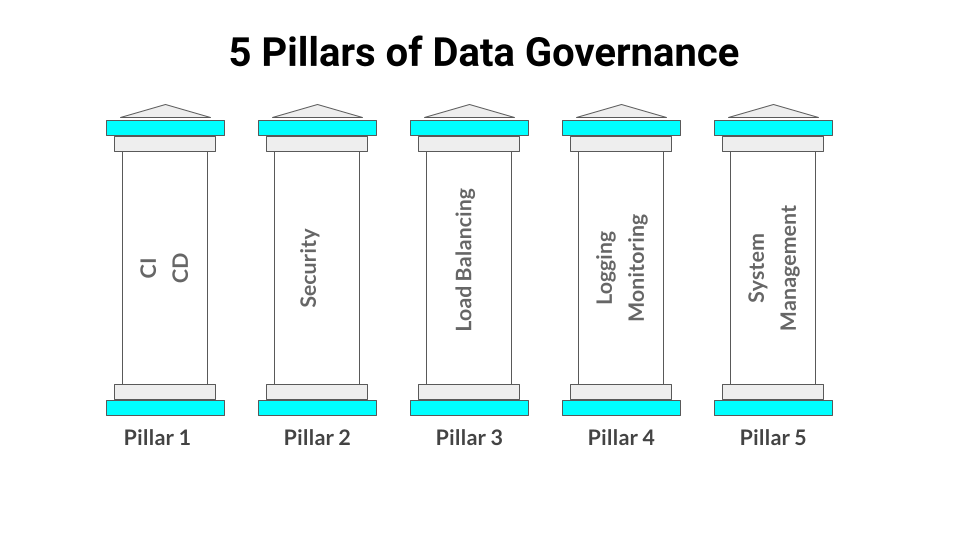Data is the fuel that propels organizations past stiff competition. It is the secret behind developing new revenue sources for business. Designing data governance to ensure availability, relevance, and high quality is a step towards the direction of high-value creation. McKinsey Global Data Transformation Survey revealed that the poor quality of data and lack of data availability resulted in employees spending 30% of their time on non-value-added tasks. Nonetheless, Deloitte survey in 2022 revealed that only 11% of the respondents had established strong data governance . Let’s take a look at the best practices in designing a centralized data governance and reporting that delivers value to business enterprises.
1. Identify the needs
“Reportable data governance establishments build confidence in data. No doubt!” – Aparajeeta Das, CEO, InstaMart.ai
To set up an effective centralized data governance, there is a need to outline the business requirements which entail:
- Single definition of data
- Changes to data quality
- Locating system of origin and metrics
- Establishing a Single Version of the Truth
- Improvements in access to Trusted Data and Metadata Report
- Controls in the Governing process.
Without clear insight into the business requirements, the data powers are not only rendered ineffective but also fail to support the IT functions.
- Align business Requirement with the Leadership Vision and Mission
Data governance requires consistency between business requirements and the leaders’ vision in terms of defining KPIs or metrics, master data management and process management with a steering committee. The senior executives and leadership should be part of the process to steer the organization into the long term gains. Leadership vision is an important aspect in the realization of the benefits of data governance.
On the other hand, poor data governance has far-reaching financial consequences. For instance, the General Data Protection Regulation (GDR) fined Amazon USD 877 million in July 2021 following its poor data governance. Meta also paid a fine of USD 275 million by the Irish regulator for exposing personal data on an online hacking forum in 2018 and 2019. It implies that the risks associated with data governance are a concern for top enterprise leaders. Therefore, it is important to choose a suitable data governance framework.
- Choose a Data Governance and Reporting Framework
Well, every executive agrees that a robust data-governance framework is an oil that propels an organization to a data transformation journey. It requires a careful combination of people, technology, and processes in ways that yields data quality as well as improves compliance.
Our optimal data governance and reporting framework are guided by five pillars:
- Reporting of Data Architecture. Data governance and reporting is a mandate of different stakeholders within the business enterprise. Data architecture is the basis for building confidence in leadership and engaging various stakeholders in a step-by-step process leading to full-scale practices and standards. These activities that determine how data flow within the organization include:
- Master Device Management (MDM) and definition of source of origin
- Enterprise data architecture
- Enterprise data flow designs
- Data flow lineage reporting and;
- Data governance steering committee
Effective reporting data architecture is the first step towards the achievement of quality standards in data governance.
- Identification of data quality patterns is a natural process that enables the stakeholders to remove and record compromising data. The three core activities include data retention and archival policies, data quality management and reporting, and process and policies around actionable insights.
- SVOT& SSOT Key Performance Indicator Reports. When you adopt a data governance and reporting framework, you deserve to know its effectiveness in light of the desired outcomes. Therefore, the Single Version of Truth (SVOT) and a Single Source of Truth (SSOT) KPIs should encompass.
- Cataloging of reports metadata.
- Dictionary of KPIs or Metrics with SOPs per subject area and;
- Ownership of Metrics per department or subject area.
Including the KPIs in the execution playbook for data governance and reporting is the basis of inspiration for success. It is through these insights that you make every necessary effort to treat endemic data pains and start reaping tangible evidence of your progress.
- Security &Access Control Committee. Data governance and reporting requirements that individuals within the organizations are assigned responsibilities as data stewards. This involves data access authentication and authorizations, compliances, and security policies and audits. Organizations store confidential user and business information that can lead to massive consequences when it lands in the wrong hands. The security and access control committee is an important aspect of the framework given its role in ensuring the organization adheres to compliance standards such as the CCPA or HIPAA amongst others.
- Training and a Data-Driven Culture. A data-driven culture is a necessary ticket for survival in a digital world. Unlike other components of the framework, it is not a one-off item that you’ll shelve after completion. It is a continuous process in which users or employees are aware of their responsibilities in data governance and the impacts of such activities on the KPIs. To create a data-driven culture, training is necessary to drive through data awareness. Some of the approaches include training portals and SME assignments to ensure that employees are continuously updated as their responsibilities evolve.
The highlighted data governance and reporting framework create value in terms of its role in enhancing the visibility of the data estate, increasing transparency in data management, and establishing a strong basis for compliance with the existing standards. To realize this goal, organizations need to rely on a clear delivery and execution roadmap.
- Deliver and Execute Roadmap
Designing data governance and a centralized reporting framework outlined requires a clear delivery and execution roadmap. While this is done based on the specific needs of an organization, there is a need to focus on one department or subject at a time.
Summary
When you seek to set up centralized data governance and reporting, remember you’re about to change how people behave around your data. You’re also in the business of changing how employees perform their daily tasks. Therefore, engaging professionals with hands-on experience is not a necessity, it is a requirement for your success. A practitioner-led framework guarantees positive progress toward the desired value in designing a centralized data governance and reporting framework.




Thanks for sharing. I read many of your blog posts, cool, your blog is very good.